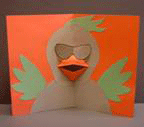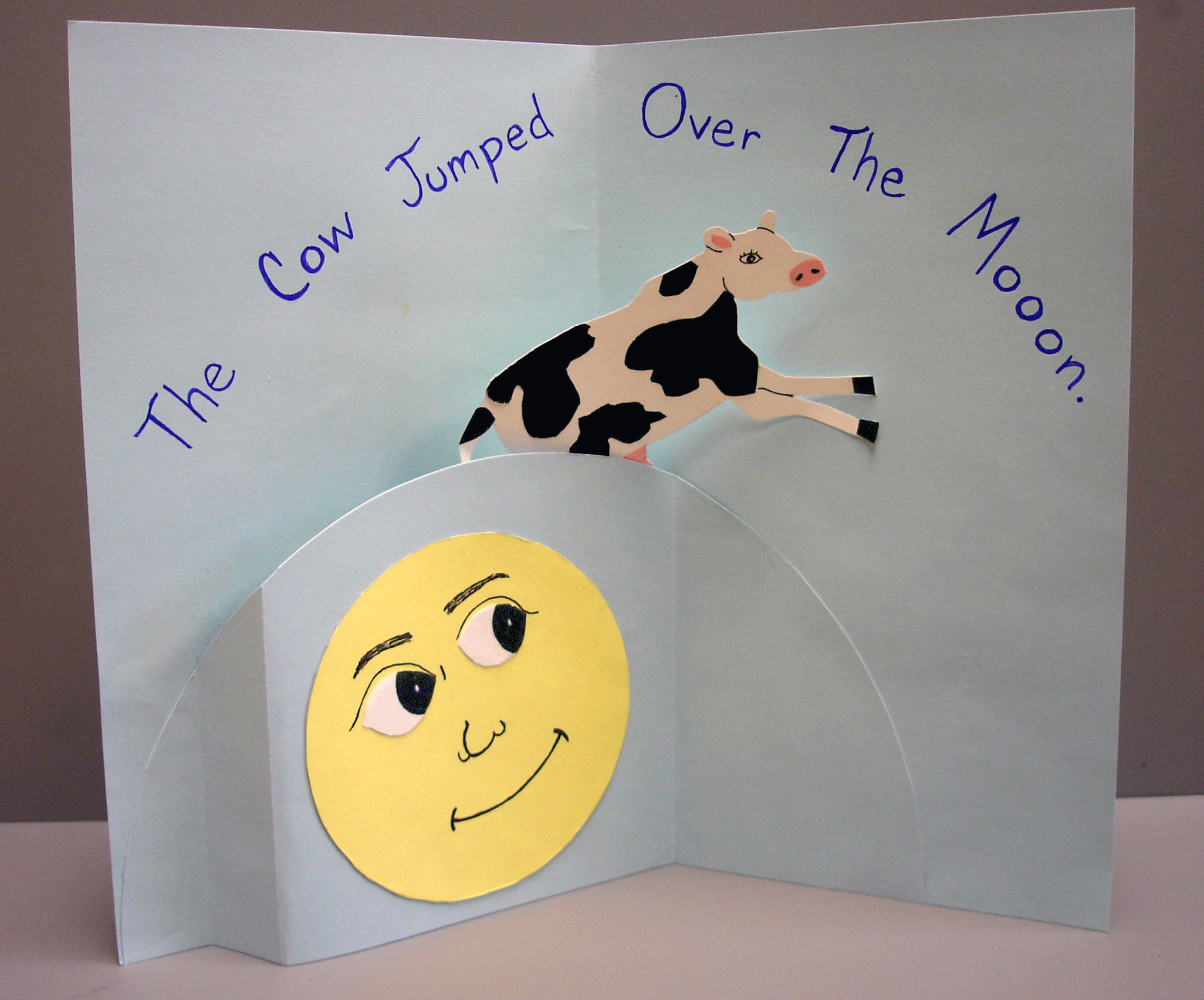
By Faith Weller
This summer I worked with Nell O’Rourke and Ana Spasova under the guidance of Professor O'Rourke with the goal of making a manual for teachers to use pop-up books as a tool to teach mathematics. Specifically, I worked on the design of three different types of pop-up cards: parallel folds, angle folds, and rotary motion.
We started working with the most basic design of parallel folds, which can be created solely by cutting or by cutting and gluing. We quickly learned that for a card to function properly as a pop-up, certain constraints must be met. Most importantly, the sum of the two edges along the card must equal the sum of the two edges that pop up. Using this knowledge of parallel folds we created the card to the left.

Next, we moved on to angle folds, particularly V-folds. A V-fold requires a single horizontal cut, a set of V-shaped valley folds, and a mountain fold from the apex of the V to the cut. These are placed symmetrically about the vertical crease of the card. Nell was inspired to create the card to the right using two V-folds to form the bird’s beak.

Our next task was to further explore the geometry of the V-fold. In particular, we wanted to show the path in space of the line extending from the central rib of the V-fold. The tip of this line, called p, moves in a plane as the card opens. This plane “medial plane” is the plane through the card’s centerline, midway between the front and back faces of the card. Moreover, p traces out a quarter-circle as it moves along the medial plane centered on the V-fold apex, with radius equal to the length of the rib. We created an animation in POV-ray, one still of which is shown to the left, but we also wanted to make a card model, as shown below. To create the medial plane, we used two square parallel folds. We then placed the medial plane along the centerline and into a slit in each of the mountain folds, so the medial plane would continuously bisect the card angle as the card opens. Finally, it was necessary to cut a hole in the medial plane in order to place the V-fold and extended tip along the centerline.


Our final project was to design a card using rotary motion. Rotary motion is created by a V-fold in a valley crease. The line extending from the central rib of the V-fold is forced to stay flat by the platform lying over the V-fold. The angle of rotation is equal to the angle of the apex of the V. In the card to the left, rotary motion is used to make the cow jump over the moon.

(Supported by the National Science Foundation)
Advisor: Joseph O’Rourke